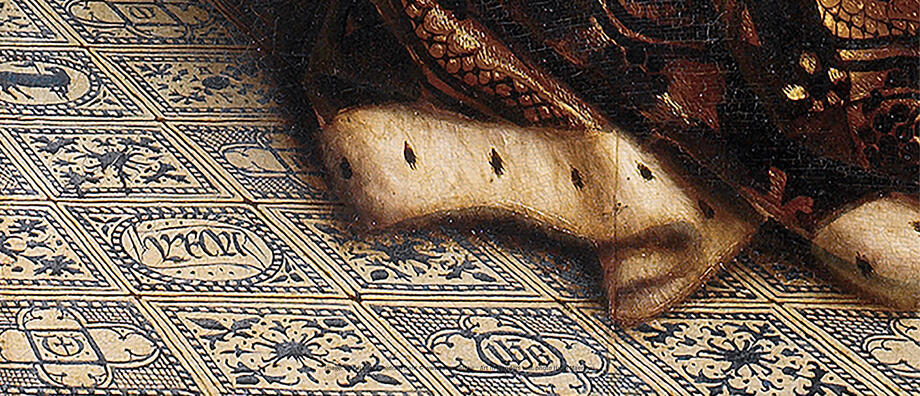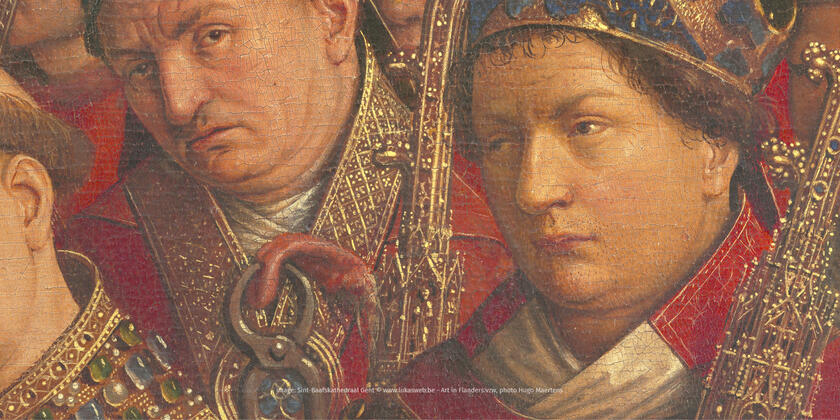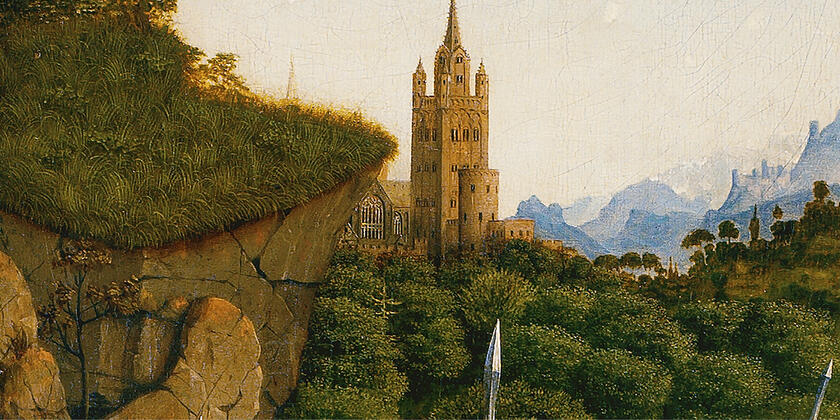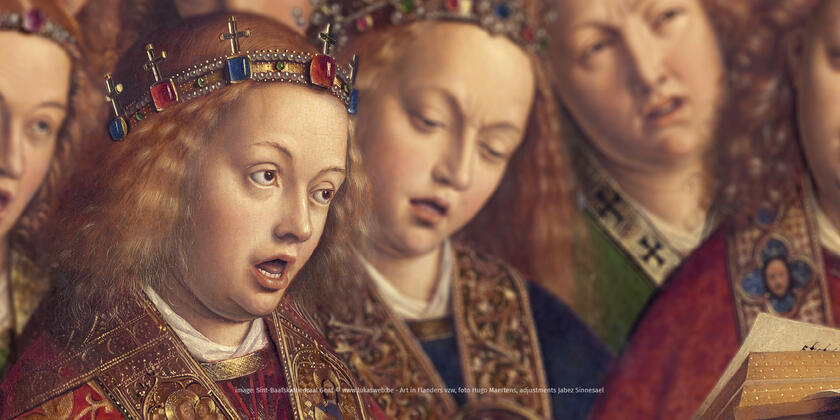Clothing
When it comes to medieval dress, we can learn a lot from Jan Van Eyck’s paintings. When creating his masterpieces, he paid a lot of attention to clothing. Through his diplomatic contacts he would have had a broad knowledge of the various fabrics. He painted a wide variety of fabrics with a special eye for detail. He depicted the thin scarlet woollens, for which Ghent, Bruges and other Flemish cities were famous, in great detail. The figure of God in the central front panel of the Ghent Altarpiece is wearing this fabric. He imitated the silk fabrics of the cloths of honour behind the Deesis of the Ghent Altarpiece by making use of applied brocade. This was a relatively new and complex technique in the 15th century. Using tin moulds, Jan Van Eyck made gilded and painted reliefs which he then attached to the painting. Not only did he paint all the fabrics in a realistic manner, he also depicted the seams on the characters' clothing. So Jan Van Eyck was more than just a painter!




